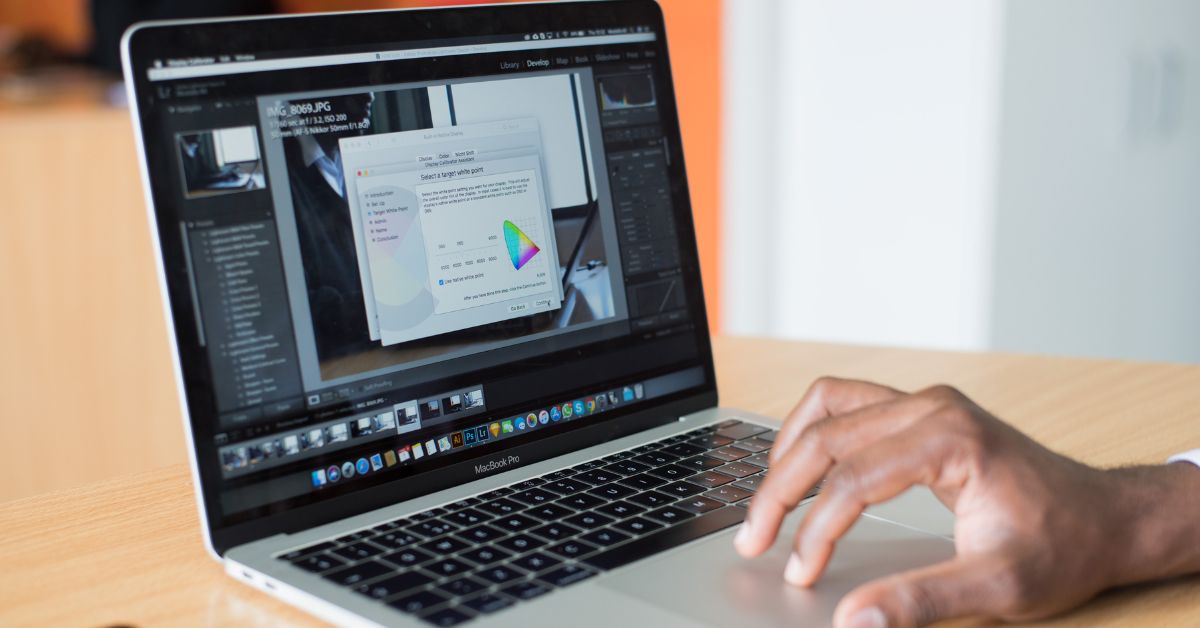The MacBook Air has seen some massive improvements since the introduction of the M1-based laptop, including great performance gains and massive efficiency in battery life. But how long does a MacBook Air M1 battery last per charge and what’s the lifespan like?
You can expect to get around 11 to 12 hours from a single charge on a MacBook Air doing normal browsing and activities. High intensity app usage like video editing will likely reduce this about 20%.
Let’s look at how the battery of the MacBook Air M1 has been performing, how to get the most out of it, and what you can expect moving forward for this compact laptop from Apple.
How Long Can MacBook Air M1 Battery Last?
There are several factors going towards lengthening or shortening the battery life, but generally you should be able to get over eight hours and up to about 11 or 12 hours with some tweaking.
Primary among the tweaks is the brightness settings, these can be easily changed on the keyboard.
Other settings include Bluetooth and WiFi will also drain the battery over time.
These can be turned off from settings and this should see some noticeable battery life lengthening, but of course the lack of an ethernet port on the MacBook Air makes getting internet hard in that situation.
Apple states that you can get up to 18 hours of battery life on the MacBook Air. [1] This was done back in October 2020 by Apple using the M1 chip and 8-core GPU, configured with 8GB of RAM and 512GB SSD.
This was achieved by playing HD 1080p content with display brightness set to 8 clicks from bottom. It is important to realize that this was local content being streamed from the SSD, and you won’t see this type of performance when streaming similar content.
This is because streaming is a very intensive process in and of itself, likely because of the real time encoding or decoding and other associated processes pushing up the processor and overall load on the laptop, significantly affecting battery time.
Other users have reported that typical battery life seems to be in the realm of 11 to 12 hours, even when attempting the same testing conditions as those supposedly undertaken by Apple.
While it may be hard to go without WiFi switched on, Bluetooth is likely less important to be kept on all day, and even going down to 50% brightness from 100% brightness has been shown to easily boost the MacBook past 8 hours of constant use.
This was achieved even with many apps open, programs such as Final Cut Pro being used, video calls being done throughout the day and much more. Ideally, if you’re getting about eight hours of battery life, that will get you through a work day.
However, if you’re instead doing quite high intensity activities you probably won’t get this type of lifespan.
This means if you’re doing video editing, dealing with 8K data file conversion or running a very intensive browser session with many active tabs open, it’s unlikely you’re consistently going to get this kind of battery life day in and day out, especially over the long term.
MacBook Air M1 Battery Life After One Year
One year doesn’t seem to be enough time to see massive overall degradation in the battery when the laptop is brand new.
While older MacBook Airs seem to suffer pretty badly and quickly from battery failure, this doesn’t seem to be the case with the newer models.
This is perhaps to be expected as technology improves, successful designs are iterated upon, and processes like RMA (return merchandise authorization) see faulty units get back to the technicians who can then diagnose the general flaws causing these failures.
This means these model specific flaws can be identified, solutions found, and pushed out to the current models or at least the next versions to prevent this issue being so destructive.
The specific characteristics of the MacBook Air are also going to help contribute to longer battery life. The lack of moving components and robustness of the materials in the MacBook means you could get up to 15 years if everything falls into place with a MacBook Air M1.
This cannot be overstated. Heat is usually the killer for electronics, but since the MacBook Air M1 only requires a heat spreader rather than relying on a fan, this means that heat is not a major issue for the M1 chips.
On top of this, the MacBook will scale its heat output down if it starts going up, further preventing heat death. So you may see a lowering of performance when the MacBook Air M1 gets close to its performance limit, but this should result in a longer lasting battery.
How to Prolong MacBook Air M1 Battery Life?
Moving the screen brightness down a few notches using the F1 key on the keyboard will do a lot to keep your battery life lasting that bit longer. This was even the most common tip that people give to get an extra two or three hours out of your MacBook Air M1.
To get the most out of your battery, go through and make sure your applications are up to date, as this will mean all app and system operations are working smoothly. Apple has offered this as a key tip in making sure your battery lasts.
This is likely due to updates bringing in optimizations for how the battery gets used and how the M1 chip is utilized.
The consensus seems to be that putting the MacBook to sleep rather than shutting it down will help conserve battery life over the long term.
As MacBook Airs use lithium ion batteries, there are things you should do to prevent damage to the battery. One is not to leave it on charge 24 hours a day. You also shouldn’t let it completely drain to 0% before charging it.
This used to be the advice regarding batteries, but the prevailing advice is now that you should attempt to keep the battery between 10% and 75%.
While this may require some fiddling with the charger and charging times, it will definitely go a long way towards getting the most out of your prized MacBook Air.
Apple provides you with some great tips on how to maximize your battery performance, and these should be followed to get the most out of your device. [2] One of these tips is avoiding extreme ambient temperatures, try and keep it at 62° to 72 °F (16° to 22 °C).
If you notice that the MacBook gets hot during charging, take off any removable cases to see if it improves it. Constantly keeping up the temperature of the MacBook will likely cause deterioration of the MacBook across a variety of metrics, including battery life.
If you’re wanting to store the MacBook long term, leave it about half-charge and put it in a cool, dry place that’s less than 90 °F (32 °C). Every six months you should take it out and charge it back up to 50%.
You should eject an SD card if you’re not currently accessing it as this will drain the battery over time. As mentioned above, switch off the WiFi and Bluetooth when storing it to further keep the battery from constantly draining.
In the Energy Saver preference pane, if you select maximum performance, this will mean that even when on battery it will not take the usual steps for energy efficiency such as dimming the screen and using other components sparingly.
Is MacBook Air M1 Worth Buying?
The swap from the Intel-based chips to Apple’s own M1 chips in November 2020 has certainly revolutionized the MacBook Air. Not only do you get much improved performance, even on the 8GB models, but battery efficiency has also significantly improved.
If you’re already set on getting a MacBook Air, it is almost never worth compromising and getting the older, Intel-based models.
While the newer M2 chips are better and give significantly faster performance particularly when multitasking, M1-based models are certainly still very impressive.
The performance gain, especially for multi-tasking, is unrivaled. This is especially the case if you’re concerned about future-proofing your purchase.
With the release of the M2 chips for newer versions of the MacBooks, this may put some downward price pressure on the M1 equipped MacBooks, although you’re not exactly going to be sacrificing anything particularly meaningful if you get the M1 over the M2.
The MacBook Air M1s also use passive cooling rather than active cooling. This has some notable advantages, such as the non-use of fans means you’re not sucking in debris and dirt from the outside by means of the fans.
The M1 chip is designed to run a lot cooler, thus even under load, it doesn’t require fans.
You’ll also get the solid state drive as a hard drive rather than the typical hard disk drive, meaning you should get quite a lot more mileage out of it compared to the older technology of platter drives.


